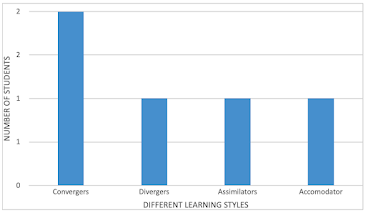Current Technology in Learning
Current Technology in Learning
Technology provides students with accelerated learning, easy-to-access information, and increased opportunities to practice what is learned. Technology helps learners deepen their comprehension of complex concepts (AxiomQ, 2022). Additionally, increased use of these digital learning tools can enhance student engagement, help educators improve their lesson plans, and facilitate personalized learning. This paper will identify three current technologies that can appropriately support differentiated instruction and enrich student learning styles.
Book2U
Book2U is the first social media-enabled tool that has an impact on learning. The tool shares similar purposes with other simple learning platforms, such as downloading or uploading files, for example, videos, documents, audio, and images. Additionally, it supports more functions and features recognized from the main elements, such as social networking, ease of use, academic purposes, and convenience. For instance, users can add other registered users into the sphere of friends, like from Facebook.
One of the social networking aspects of Book2U is that members can easily relate with each other, stalk each other’s profiles, and have a real-time chat. According to the study by Vimala, socialization is seen as vital in most learners (Balakrishnan, 2017). Conversely, pupils who work cooperatively and independently compared to the participating student seemed to emphasize this aspect more (Balakrishnan, 2017). Book2U has proved to be governed by independence and self-direction by offering learners myriad functions and flexible options that improve their convenience, efficacy, and networking. Hence, book significantly impacts students and learning outcomes despite the learning techniques.
Adaptive Learning
Adaptive learning is another technological advancement in learning. This is a methodology for both learning and teaching that aims to personalize readings, lessons, practice activities, and assessments for individual learners based on their main performance and skills. The tool was created to help corporate instructors deliver professional training more efficiently (AxiomQ, 2022). Adaptive learning, as the name suggests, is a tool that provides an educational process to students based on their requirements and learning preferences. It assists pupils in adjusting to specialized learning routes that depend on their interests and aptitude for education (Munoz et al., 2022). The program can be changed by its presence since it uses automated systems to plan how to engage with the student. As artificial intelligence gave rise to adaptive learning, it still proactively provides the best learning resources and activities to satisfy a learner’s unique demands.
Artificial Intelligence
Thirdly, artificial intelligence is often recognized as among the most talked-about developments in the field of technology. Some of the ways AI can be adapted in education include exam integrity, plagiarism checkers, academic research, enhanced online discussion forums and enrollment chatbots (Chen et al., 2020). Despite being employed in many different industries, AI and machine learning are not just for the classroom (AxiomQ, 2022). For example, the Google engine and most search engines will try to parse a summary from an online search. A better option would, nevertheless, involve the pooling of personal accounts; this is what AI hopes to do. They most likely accomplish this by encouraging the future dissemination of first-person viewpoints. When writing essays, term papers, or research papers about a particular culture or custom, pupils may find this helpful.
Learning Analytics
Lastly, Learning Analytics is another developing technology in learning. This technology’s known goals include supporting quality learning and instructions by developing learner awareness by supporting self-reflection and providing timely and personalized feedback related to learning (AxiomQ, 2022). Learning is a broad process that calls for effective tracking and analysis to better comprehend outcomes. Teachers are increasingly using learning analytics, a new tool, to track pupils’ learning and behavior. This advanced technology method is characterized by data mining, discovery, and drilling to assess data or educational content (Gedrimiene et al., 2020). Most educators will have the opportunity to make specific modifications to programs as a result of tracking student learning patterns and attitudes. Growth is a crucial element in education that supports each student’s learning experience. This is how instructors can educate their pupils with learning analytics.
Conclusion
There are various technologies including social media enabled (Book2U), artificial intelligence, learning analytics, and adaptive learning that improve learning and teaching. Instructors and learners can use them more effectively as they gain unique insights into how to make the most of each one by investigating every aspect. On the other hand, instructors can enhance the instructional atmosphere by utilizing virtual learning tools. This paper’s goal was to achieve that by outlining important technological information. One must be prepared to embrace technology to enhance learning as a student and a teacher.
References
AxiomQ. (2022, March 7).7 Emerging technologies that will reshape education in 2022. https://axiomq.com/blog/7-emerging-technologies-that-will-reshape-education-in-2022/#:~:text=Augmented%20Reality%20(AR)%20%26%20Simulations&text=Today%2C%20it’s%20great%20impact%20has,the%20world’s%20best%2Demerging%20technologies.
Balakrishnan, V. (2017). Book2U and students’ learning styles: The effect of learning styles on intention to use a social media-enabled tool. Universal Access in the Information Society, 16(2), 325-335. DOI 10.1007/s10209-016-0460-5
Chen, L., Chen, P., & Lin, Z. (2020). Artificial intelligence in education: A review. Ieee Access, 8, 75264-75278. https://doi.org/10.1109/ACCESS.2020.2988510
Gedrimiene, E., Silvola, A., Pursiainen, J., Rusanen, J., & Muukkonen, H. (2020). Learning analytics in education: Literature review and case examples from vocational education. Scandinavian Journal of Educational Research, 64(7), 1105-1119. https://doi.org/10.1080/00313831.2019.1649718
Muñoz, J. L. R., Ojeda, F. M., Jurado, D. L. A., Peña, P. F. P., Carranza, C. P. M., Berríos, H. Q., & Vasquez-Pauca, M. J. (2022). Systematic review of adaptive learning technology for learning in higher education. Eurasian Journal of Educational Research, 98(98), 221-233. https://www.ejer.info/index.php/journal/article/view/707

Comments
Post a Comment